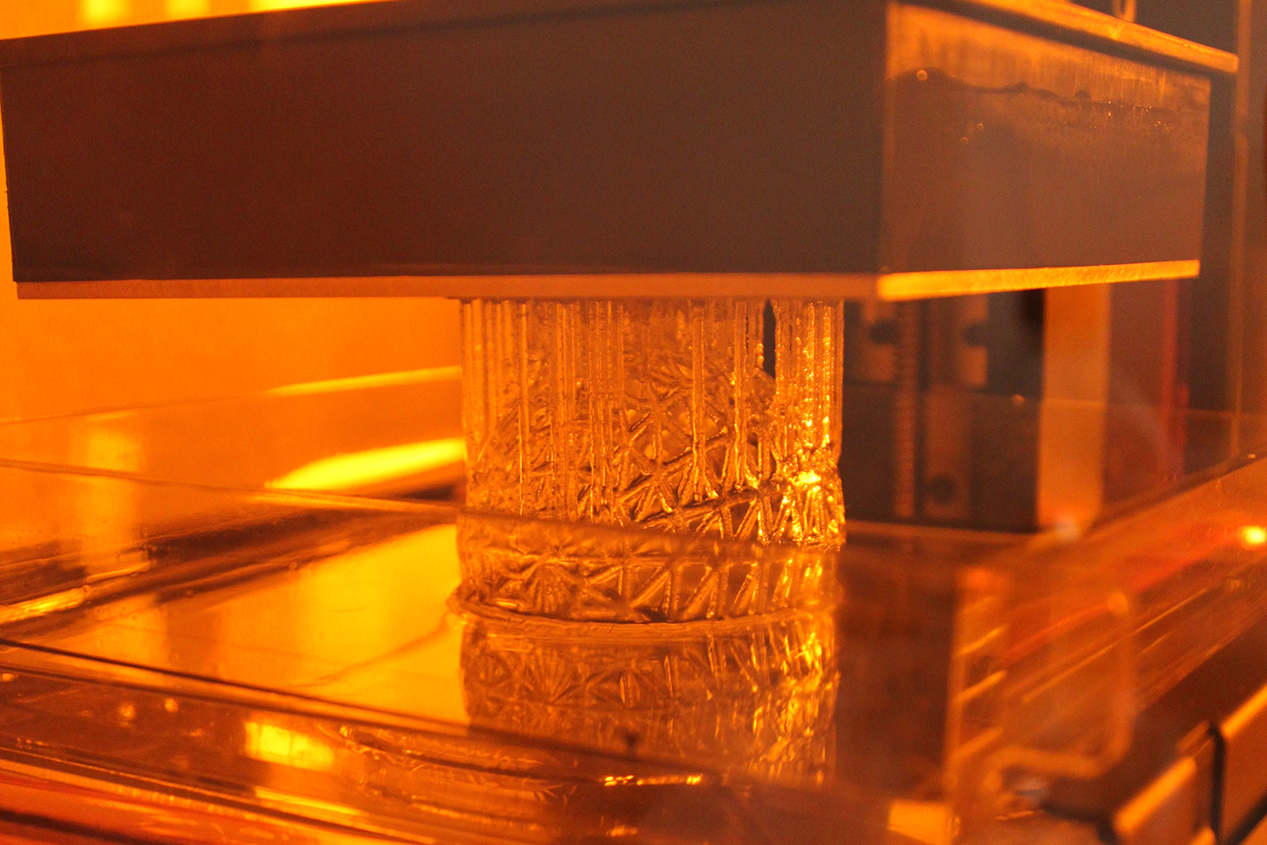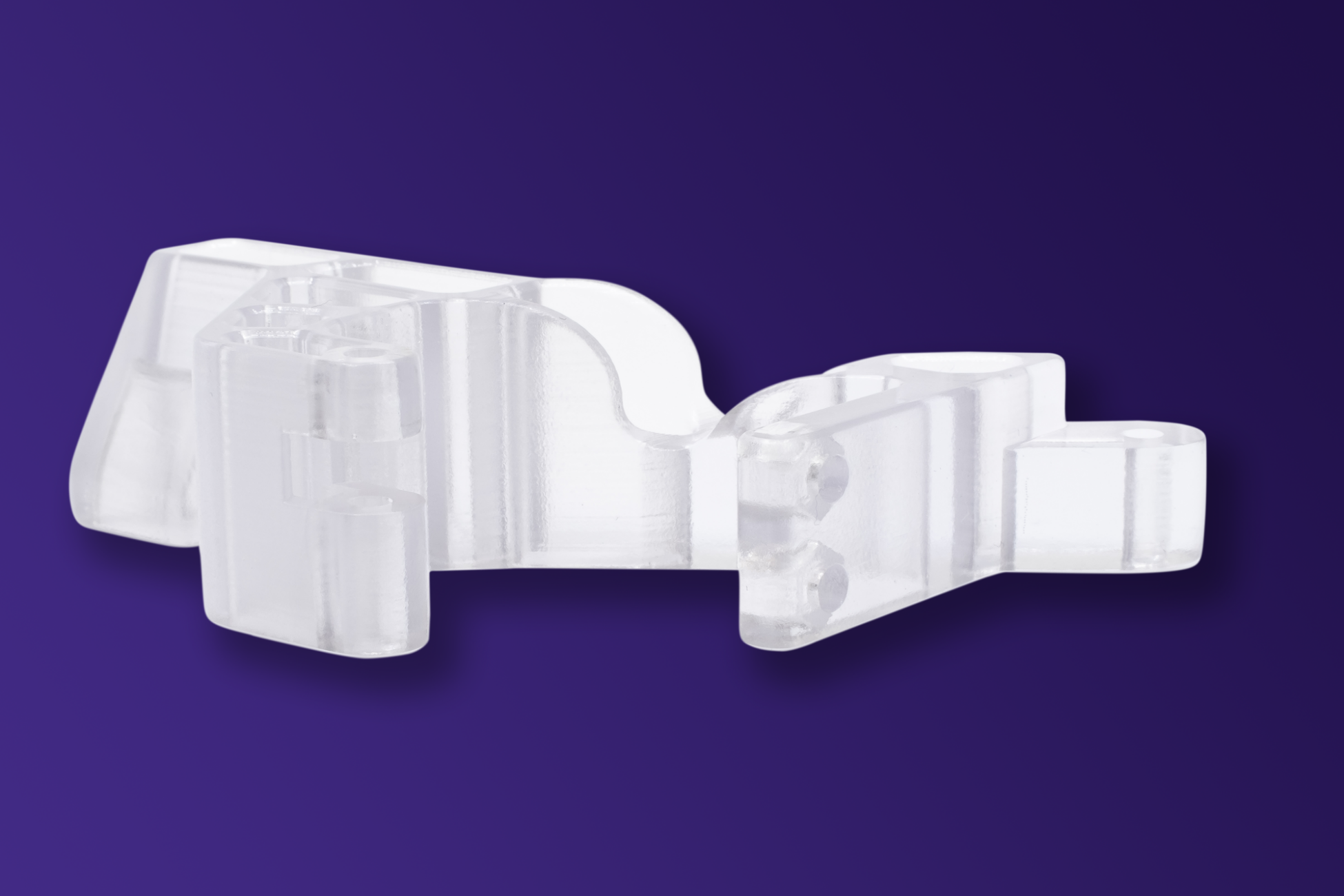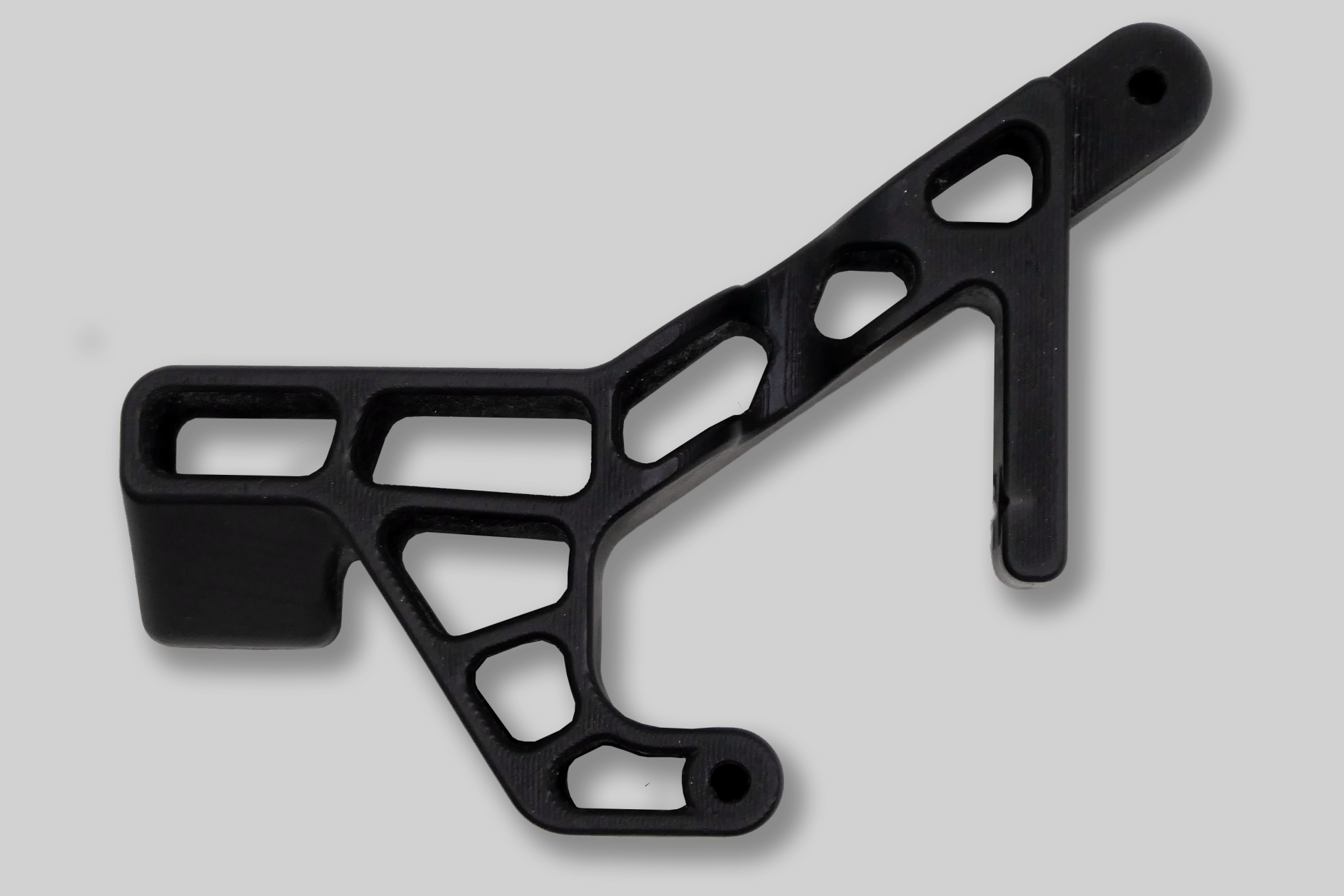The additive manufacturing technologies in detail
The SLA 3D Printing
Stereolithography is not only the oldest, but still one of the most precise 3D printing processes. SLA 3D printing was invented by Charles Hull back in 1984. In the SLA process, liquid photopolymers in the form of a resin are cured by a laser beam. The laser is moved in the horizontal axis over a resin shell, solidifying the material layer by layer, point by point. Modern SLA 3D printers work with two different approaches:
- The platform with the resin shell is moved down the Z axis with each new layer - the laser here works from top to bottom.
- The platform is moved upwards with each new layer on the Z-axis - here the laser works from bottom to top. In this process, the component is printed overhanging on its head.
The SLA printing process enables extremely smooth surfaces and thinnest layers with a thickness between 0.05 and 0.01 mm. In addition to high precision, this printing process also enables the creation of models made of composite materials or the combination of hard and soft materials.
DLP 3D printing
DLP printing is also an "old" process that emerged from image projection technology in the 1980s. DLP 3D printing, also known as LSPc (Lubricant-Sublayer-Photo-curing) depending on the manufacturer, uses a projector as the exposure medium. As with the SLA process, DLP 3D printing illuminates liquid photopolymer in a resin shell. However, a digital micromirror device between the projector and the surface of the resin enables highly accurate exposure of the entire layer in each pass. The individually controllable microscopic mirrors, which are installed on a semiconductor chip in the form of a matrix on the device, control the light extremely precisely so that the resin is cured with absolute precision.
A direct comparison of the additive manufacturing processes
Even though the printing processes of SLA and DLP are similar, and both methods deliver 3D prints with the finest details and smoothest surfaces, there are significant differences in a direct comparison that are crucial when choosing the appropriate printing process for a specific requirement.
Impact of the technology differences on the parts to be printed
Resolution
In 3D printing, resolution is distinguished between two-dimensional surface dimensions (X- and Y-axis) and layer thickness in the Z-axis. Both SLA and DLP offer the finest resolutions in the Z-axis and thus the thinnest layers of all 3D printing processes. Achievable resolutions for both SLA and DLP are in the range of 25 to 300 microns.
Differences are found in the resolution of the X and Y axes. In DLP printing, the resolution depends on the resolution of the projector and its distance from the so-called optical window. The projector determines the pixel size with which each layer of the model to be printed is produced. The most common resolution here is 1080p (Full HD). DLP 3D printers mostly offer a fixed resolution for X and Y. This is between 35 and 100 pixels. This is in the range between 35 and 100 micrometers.
In SLA printing, the resolution of the X and Y axes is defined by the step size of the laser beam and its dot size. The resolution is in the range of 25 micrometers.
The speed of 3D printers
In terms of printing speed, the advantages clearly lie with DLP printing. While in SLA 3D printing the resin is cured dot by dot, DLP allows printing of a complete layer. This advantage can be exploited in particular for the production of longer components or economical series production. In direct comparison, DLP is the decisive difference faster, which makes the process ideally suited for additive series production.
The build volume and maximum size
In both SLA 3D printing and DLP 3D printing, the build volume is always limited by the size of the tank containing the liquid resin. Another limitation concerns the so-called pull-off force. The larger the parts to be printed, the higher the forces that act on the printed object when the cured layer is detached from the tank. In terms of maximum build volume, the SLA process is ahead of DLP technology. Thus, on Jellypipe, a build volume of up to 1500x750x550mm is available in SLA, whereas in DLP the maximum is 380x200x310mm. (As of 03.03.2022)
The surface quality of additively manufactured components.
Both SLA and DLP are quite rightly regarded as the printing processes with the highest surface quality. Differences in surface quality can be seen primarily in the smallest details. In DLP prints, for example, rounded corners often appear "stair-stepped". The reason for this is the printing technology, which is based on rectangular pixels - so-called voxels. Nevertheless, the quality of DLP-printed components is high and roughly comparable to that of conventional injection molding.





